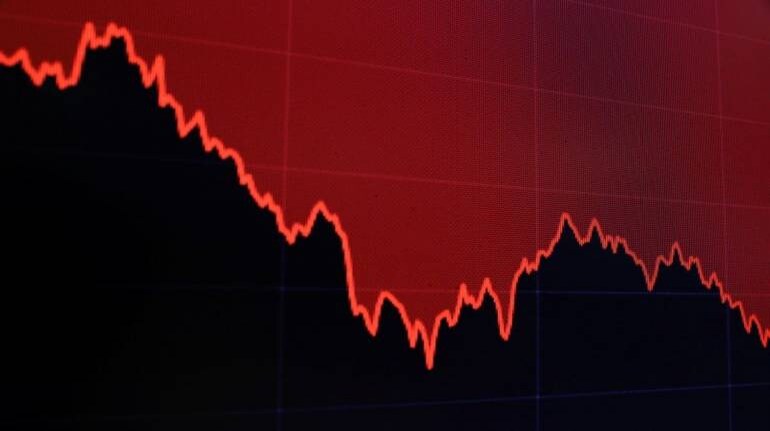



Manas Chakravarty
The CME group, a US financial markets company, has a Fedwatch tool, which tracks market expectations of where the Federal Funds rate, the policy rate of the US Federal Reserve, is expected to be in the future.
As of December 24, this indicator says the market is pricing in a 56 percent probability the Fed Funds rate will be at its current level of 2.25-2.5 percent in January 2020. There’s just a 25 percent probability that it’ll be higher.
In contrast, at their last meeting held on December 18-19, the US Federal Reserve had signalled that there will likely be two more rate hikes in 2019 and another one in 2020. In other words, the market seems to believe that we’ve reached the end of hikes from the US Fed for the time being, despite what the Fed says.
Why does the market think that? There has been much talk of a growth slowdown. The December Bank of America-Merrill Lynch survey of global fund managers showed that a net 53 percent of those surveyed ‘expect global growth to weaken over the next twelve months, the worst outlook on the global economy since October 2008.’
But all the Asian Development Bank did in its Outlook Supplement this month was to cut US growth in 2019 from 2.5 percent to 2.4 percent. A month earlier, the Organization for Economic Co-operation and Development (OECD), the rich countries’ club, cut its forecast of world growth from 3.7 percent to 3.5 percent. That is not exactly a big deal.
Estimates of earnings growth for the companies in the S&P 500 index for 2019 are about 10 percent, which is not bad. Of course, it’s possible these estimates will be revised downwards, but as we’ve seen the international agencies don’t think growth will fall off a cliff. Indeed, low crude oil prices may well support growth.
Why then the sudden plunge in stock prices? Analysts looking for a reason have zeroed in on the US market’s price-earnings multiple based on cyclically-adjusted earnings, which is very high. Back in October, the International Monetary Fund’s Global Financial Stability Report had an entire section with the heading: ‘Asset Valuations Remain Stretched in Major Markets, and Could Adjust Abruptly’. And with such a long bull market in the US, it is surely time to book profits. That is why some analysts predict this downturn will end soon, followed by a swift rebound.
Is it just a scare then, an excuse to book profits? Or has something changed fundamentally? One thing that seems to have changed is the stance of the US Federal Reserve. Its chairman Jerome Powell appears unfazed by the tantrums thrown by the market. His remark that the contraction of the US Fed’s balance sheet is on autopilot is not music to investors’ ears. Donald Trump has threatened to fire him for derailing the economy.
If Powell sticks to his guns, it will be a major change from the market’s blithe assumption of a ‘Fed put’, the belief that the Federal Reserve will always backstop the markets. Alan Greenspan was the originator of the ‘Fed put’ and we all know how that ended.
Subsequent Fed governors have continued with Greenspan’s policies. The upshot: total debt to the US non-financial sector, as a percentage of GDP, is now higher than what it was before the financial crisis. Similarly, total debt to the US non-financial corporate sector is also higher than it was during the crisis. It’s no wonder then that the markets are worried about the impact of tightening liquidity.
Since the financial crisis of 2008, markets across the world have been high on the cocaine of liquidity supplied liberally by central banks. Whenever a problem came up, the central banks were scared into injecting even greater doses of the drug.
That is why we had three episodes of Quantitative Easing in the US. Recall also European Central Bank President Mario Draghi’s famous assurance that he would do ‘whatever it takes.’ What we’re seeing now is a market tantrum at being denied its customary fix. Given the market’s long addiction to monetary fixes, the withdrawal symptoms may get very nasty.
To be sure, the markets still believe the Fed chairman will soon be forced to stop hiking rates. And it is entirely possible he may ultimately succumb to pressure. But the markets may have been damaged substantially by then.
While Powell’s determination to normalise interest rates is commendable, the fact remains that the macro environment is anything but stable. Trade wars, Brexit, a slowing Chinese economy, geopolitics and a maverick US president are all risks. Tightening monetary policy in this environment will add to them.
Discover the latest Business News, Sensex, and Nifty updates. Obtain Personal Finance insights, tax queries, and expert opinions on Moneycontrol or download the Moneycontrol App to stay updated!
Find the best of Al News in one place, specially curated for you every weekend.
Stay on top of the latest tech trends and biggest startup news.